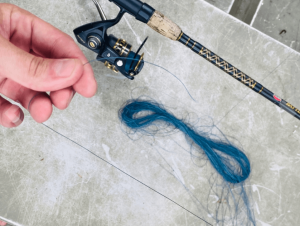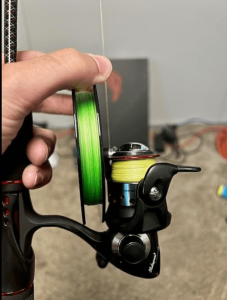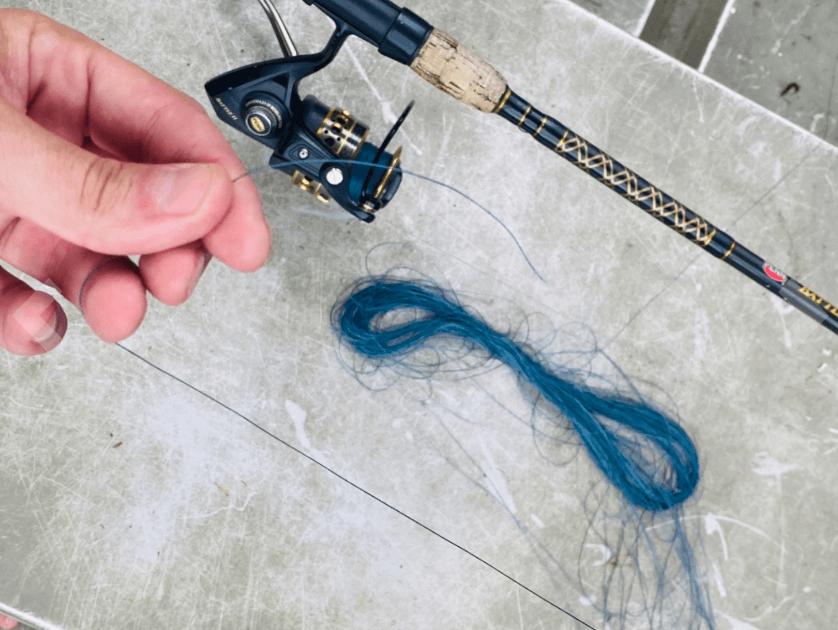A fishing line is considered an indispensable item. After a while, they may show signs that it’s time for you to get a new one.
The article below will show how long fishing lines last theoretically, signs that they need to be replaced, how often you should change them, and some ways to preserve them.
Contents
How long does a fishing line last?
Each type of fishing line will have a different lifespan, partly because of the production materials. Monofilament lines are made from synthetic fibers, and using them in saltwater makes them more absorbent and will decompose faster. Therefore, monofilament lines typically last 2 to 3 years.
Because their material is stronger and more resistant, Fluorocarbon lines will last much longer than monofilament lines. In good storage conditions, you can use a fluorocarbon fishing line for 7 to 10 years.
Braided lines are typically made from long, tightly woven fibers of one of several different polymers, such as Dacron, Dyneema, or Spectra. Therefore, they will be durable and last up to over 10 years.
How often should you change fishing line?
Seeing signs that you need to replace the fishing line
- Sensiness decreases: When you notice that your fishing line is not as sensitive as before, that may be a time that you should change your line. It will be harder for you to feel whether the fish is biting your line or not if your line loses its sensitivity. In other words, dirt and grime that build up on the line will make your line less subtle than before.
- Twists and tangles frequently: If your line often gets twisted and tangled, that is a sign that it may lose its strength and should be replaced.
- Too much memory: If your fishing line has a lot of memory, it’s time to replace it with a newer set. When there is too much memory, it will be difficult for your fishing line to stay on the reel, but on the contrary, it will easily slip off the reel.
- Damage visibility: If you easily notice differences in the fishing line, such as fraying or wear, these are visible damages. Therefore, you can replace a newer fishing line when you see these signs.

Based on the frequency of checking line
Typically, the frequency of checking fishing lines will depend on what fishing lines you are using and how long you have been using them.
The only thing in common is that the older the fishing lines are, the more thoroughly you should inspect them.
Monofilament line
Monofilament fishing line has a significant weakness: it is easily prone to sunlight and UV rays. Every time the fishing line is exposed to sunlight, it may stretch. Checking your mono fishing line at the beginning of your fishing session will help you avoid unwanted situations. In addition, this is also the reason why fishing lines quickly accumulate memory, although they also had this disadvantage before.
Fishing line manufacturers recommend changing the monofilament fishing line once a year, but many anglers still choose to replace their lines after each trip. For instance, If you fish a lot, you should change your monofilament line 3 to 4 times a year; moderate anglers can change it 2 to 3 times a year, and weekend anglers can change it once a year. You should throw the fishing line away if your fishing line remains unused for 2 to 3 years.
Fluorocarbon line
Checking the condition of your fluorocarbon fishing line the same way you would a monofilament line. However, this type of fishing line will be much more resistant than mono fishing lines, resulting in them lasting longer.
Like monofilament lines, the fluocarbon fishing lines can be changed at least once a year, although they can last much longer.
For instance, heavy anglers should change the fluorocarbon line 3 times a year; moderate anglers can change it 1 to 2 times a year; weekend anglers can change it once a year. If you last used them approximately 7 to 10 years ago, it’s best to eliminate them.

Braided line
With braided fishing lines, the inspection time will be slightly different compared to the other two fishing lines. If your fishing trips are exposed to structure, cover, and gnarly snags, it would be great to change your fishing line after a few sessions of use.
For instance, heavy anglers can change their braided fishing line 1 to 2 times yearly; moderate anglers can change it once a year; weekenders can change it once a year. After 10 years of not using it, you should throw away the fishing line.
How do you store the fishing line?
Preserving your fishing line will help reduce the time you need to change your fishing line. Here are some tips on properly storing your fishing line so it’s still in good condition when you finally use it or to get the most extended shelf life.
Reducing air moisture
Reducing air moisture when storing fishing lines in a box will help the lines perform better. This allows your fishing line to avoid mold and reduce its resistance. Using a few desiccant packs will allow the air to become drier.
Limit sun exposure
Limiting the fishing line from the sun will help reduce damage to the fishing line. Fishing will be difficult, but you can keep them in the box after use. Then, the fishing line will be in a dark place and can avoid sunlight. But typically, a little ambient light won’t hurt your line when you use it.
Noteworthy about abrasion
Fishing lines will inevitably wear out over time. However, if you accidentally let your fishing line come into contact with metal, bait, or chemically reactive objects, it will cause your fishing line to wear out more quickly. A practical method anglers often use is bubble wrap or some other packing material between the reels, which helps keep the reels from bouncing around and hitting each other.
Conclusion
Typically, each fishing line will have a different time to change the fishing line. However, if the fishing line shows damage signals, you must replace it to avoid affecting your fishing experience. Finally, storage will help prolong the life of the fishing line.


